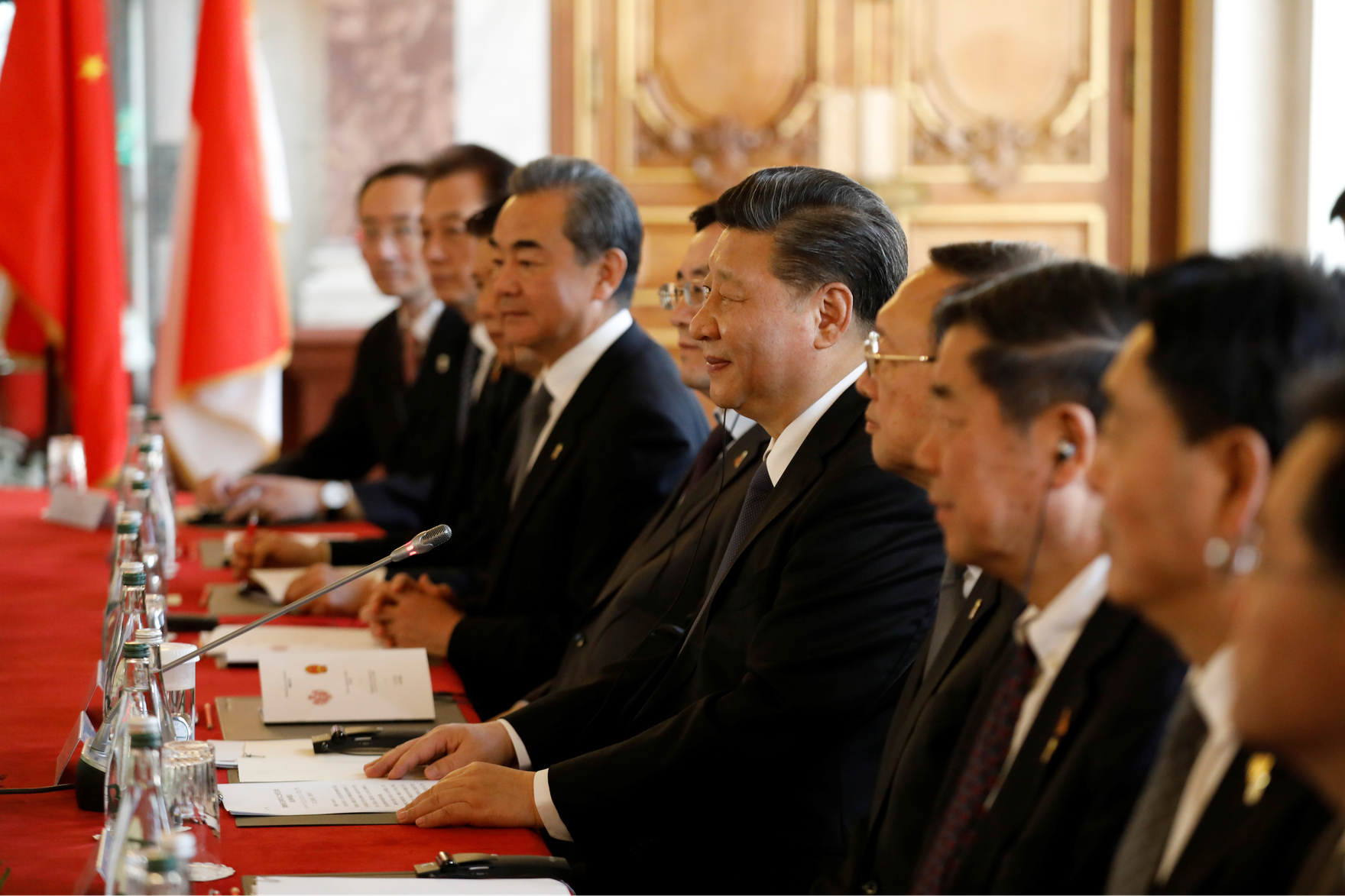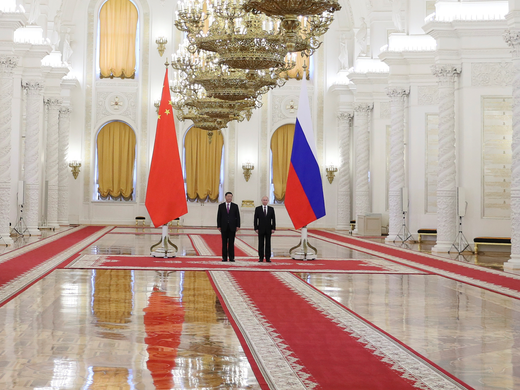China is an emerging technology superpower. Indeed, the country’s massive data ecosystem and capacity for innovation may soon form the core of its sprawling supply-chain empire. Much as the world’s supply chains now favour Chinese industries and Chinese trade, the world economy could soon be reorganized around Chinese technologies. At the heart of this shift is a fierce competition to dominate the commanding heights of the global economy.
Chinese President Xi Jinping’s signature project, the multi-trillion dollar Belt and Road Initiative (BRI), stretches across Asia, the Middle East, Africa and Europe, and represents the largest infrastructure project in history. Constructing a comprehensive trade network for Chinese goods, BRI offers a platform for basic infrastructure but also for high-tech industries such as electric vehicles, 5G (fifth-generation mobile) telecommunications, robotics, artificial intelligence (AI), semiconductors, renewables, advanced electrical equipment, high-speed rail and maritime engineering.
More than a market for advanced technologies, however, China’s expansive trade network is also the locus of what Halford Mackinder described as the geographic centre of global power. Mackinder was an early twentieth-century geostrategist who believed that the key to geopolitical dominance centres on controlling the “heartland” of Eurasia. In his view, Eurasia is the pivot area of a vast supercontinent stretching from Europe to East Asia — or what he called the “World-Island.” Any power that can control the heartland, he believed, can control the world.
China’s budding alliance with Russia and its commercial expansion into Europe and Eurasia reflect the early stages of this new historical configuration. More than simply a regional conflict, the events unfolding in Ukraine signal a turning point in the history of great power competition. Russia’s invasion of Ukraine underscores a changing geopolitical landscape.
Intensifying rivalry between the United States and China mirrors a palpable shift in the world’s economic centre of gravity, as global supply chains continue to migrate from West to East. China’s enormous economy now exerts a gravitational pull on the global order, gathering emerging markets in its orbit. More to the point, China’s capacity for innovation has begun reshaping industries around the world.
5G Telecommunications
China has ascended from a developing economy into a direct technology competitor to the United States. With 1.6 million 5G base stations and 1.7 billion mobile subscribers, China’s digital economy is now estimated to be worth US$7.1 trillion. With one-fifth of the world’s population, China is building on its vast consumer base to lead the world in telecommunications but is also developing telecom projects in Africa, Latin America and Europe. Huawei has finalized more 5G contracts than any other telecom company in the world — with half of those contracts in Europe.
High-Speed Rail
China also leads the world in high-speed rail construction, both at home and abroad. In fact, China’s high-speed rail track accounts for two-thirds of the world’s total. While the country had no high-speed rail in 2006, it now operates more than 9,600 high-speed trains each day. In total, China has 37,900 kilometres of rail network and expects to double this network by 2035. China also has the world’s fastest driverless “bullet trains” and three high-speed magnetic levitation (maglev) train lines, with plans for an additional nine.
Renewable Energy
Beyond transportation, China is poised to become the world’s first clean-energy superpower. Despite being the world’s largest carbon emitter, China is also currently the world’s largest producer of wind and solar energy and the world’s largest renewable-energy investor. China owns five of the world’s six largest solar-module manufacturing companies and is the world’s largest wind-turbine manufacturer. Beijing expects to have 35 percent of its electricity come from renewable resources by 2030 and plans to reach carbon neutrality by 2060. Indeed, of the 20 million electric vehicles in the world today, half of these are in China.
Artificial Intelligence
Now that China has commoditized computers, electronics, smartphones, telecommunications and supercomputers, its sights have turned to the industrialization of AI. According to a recent report from QuantumBlack, McKinsey’s AI consulting division, China has attracted US$17 billion for AI start-ups, and has produced one-third of both AI journal papers and AI citations worldwide; further, the country now leads the world in training data and accounts for nearly one-fifth of the world’s private investment funding in AI. More critically, China’s semiconductor industry has surpassed Europe’s and is now competing directly with the United States.
In the West, policy makers worry that China’s state-led model threatens entire technology supply chains — and for good reason. The country’s industrial policies have been groundbreaking but also opaque. What is clear is that China is becoming the main technology supplier to markets in Asia, Africa, Latin America and Europe, providing desperately needed infrastructure and connectivity around the world. As China’s technology empire continues to rise, a new global order is rising with it.



